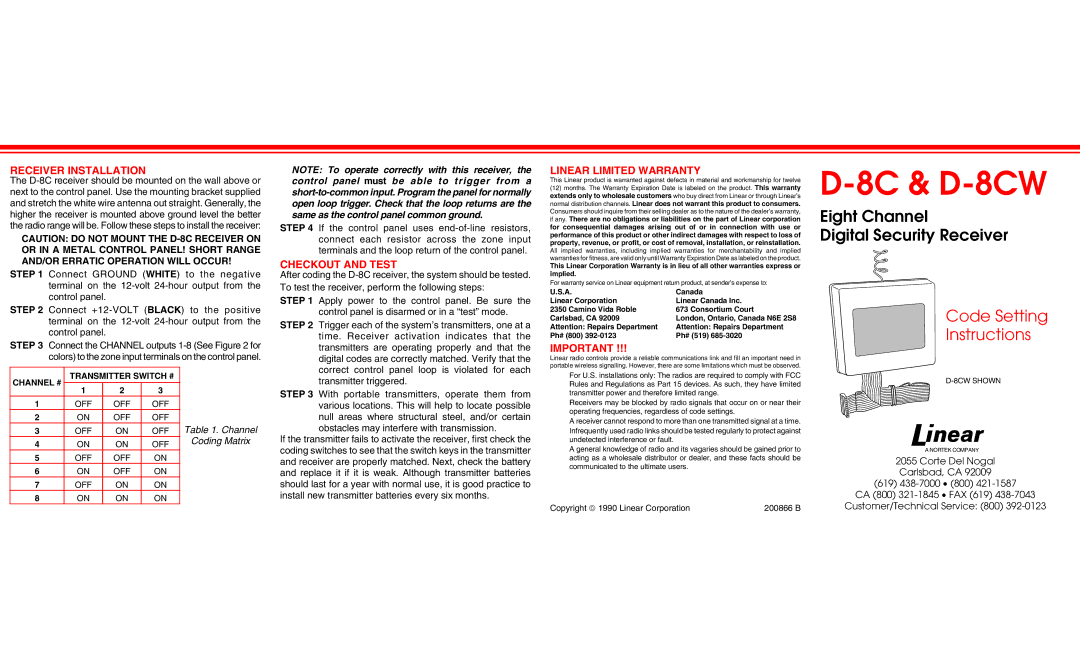D-8C specifications
The Linear D-8C is a breakthrough development in the field of audio technology, epitomizing cutting-edge design and engineering. As a high-end audio device, it caters to audiophiles and music enthusiasts seeking unparalleled audio performance and clarity.One of the main features of the D-8C is its advanced digital-to-analog conversion technology. This ensures that the conversion process from digital audio formats to analog signals maintains the purity and integrity of the sound. With high-resolution audio formats becoming increasingly prevalent, the D-8C supports sampling rates of up to 192kHz and bit depths up to 24 bits. This allows for an expansive dynamic range that captures every nuance and detail in the music.
The D-8C employs state-of-the-art signal processing algorithms, which significantly enhance the overall audio output. Through sophisticated equalization and filtering techniques, users can tailor their listening experience to their preferences. Additionally, the device features multiple connectivity options, including USB, optical, and coaxial inputs, ensuring compatibility with a broad range of audio sources, from computers to high-fidelity sound systems.
The build quality of the Linear D-8C also stands out. Crafted with robust materials, it is designed to minimize vibrations and interference, which can degrade audio quality. The internal layout is optimized for signal integrity, thereby reducing noise and improving performance.
Moreover, the user interface is intuitive, featuring a sleek design with an easy-to-navigate control panel. It allows users to switch between inputs seamlessly and adjust settings with precision. The D-8C is also equipped with high-quality connectors to ensure a secure connection with external devices, contributing to a stable and reliable performance.
In terms of sound characteristics, the Linear D-8C delivers a balanced audio profile, characterized by rich bass, clear mids, and crisp treble. The device excels in producing a three-dimensional soundstage, making it ideal for immersive listening experiences. Whether used in a living room setup or a dedicated listening space, the D-8C is engineered to transform how users experience their music.
In conclusion, the Linear D-8C is a remarkable audio device that combines advanced technology, meticulous engineering, and exceptional sound quality. With its array of features and robust build, it stands as a testament to the evolution of audio equipment, catering to discerning listeners who demand the very best.

